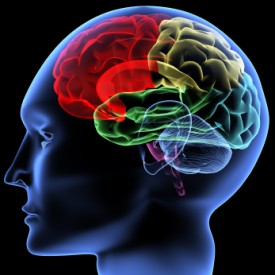What are the Best Kinesthetic Learning Strategies?
There are a number of kinesthetic learning strategies that can really help tactile learners to reach their potential.
Here are some of the best learning strategies for students of this type.
Action-Based Classes
A kinesthetic learner has a strong drive to explore material through doing and to move periodically. For both of these reasons, they can thrive in classes that involve activity, such as those that include laboratory experiments, role playing and field trips. Through these means, they can physically sense what is being studied, experience abstract ideas brought to life through examples and applications and interact with others in the process.
Allowing or Incorporating Movement in Other Class Settings
In classes that are more stationary, it can help if the kinesthetic learner is still able to engage in some motion. They can either sit in a location where they will not be a distraction if they move, stretch out or fidget or perhaps be allowed to sit near the door so they can come and go more easily now and then if this is feasible. In addition, their desire for movement can be channeled by letting them help with tasks that are necessary anyways like passing things out or moving chairs.
Compatible Teachers
Kinesthetic learners may benefit from being placed in classes with teachers who understand and value their style of learning. Such teachers will be supportive and view the kinesthetic student’s movement not as a disturbance but as a perfectly healthy expression of their nature and will be more likely to use kinesthetic learning strategies to tailor lessons to the ways that they can best learn.
Writing, Diagramming and Mapping
Both in class and during study, kinesthetic learners can benefit from putting on paper words and images. Even though it may only be their hand that is moving, even this motion can help reinforce the material. To further enhance this benefit, a larger chalk board or white board can be used so the student can engage in more expansive motions and create bigger, more complex representations.
Using Space
Kinesthetic learners benefit from abstract ideas being laid out in the real world. So, for example, if they are learning about a step-by-step process, consider writing each step out on a piece of paper and then placing the pieces of paper in order on the floor. The student can then physically walk through the process to get it “into their bones.”
Tying Study to Various Motions
Just as visual learners try to connect images and pictures to ideas to reinforce their memory of them, kinesthetic learners can connect different movements to them. They may hop while reviewing one section, then clap in rhythm to the ideas in another and so on. Audio or video reviewing the material can be prepared and played or another person can quiz them so that the person’s body is free to move as the material is delivered to them.
When it is time to be tested on the material or to put it into use, the kinesthetic learner may be able to access ideas by recalling them as “the one I was thinking of while jumping” or “the one I went over during the clapping.”
Using Objects and Materials
Kinesthetic learners love to manipulate things in the environment and doing so as they work with ideas helps the material stick. So, one of the best kinesthetic learning strategies is to find creative ways that lessons can be reinforced through activities involving toys like Legos or K’Nex or materials like playdough or clay.
Frequent Breaks
Long unbroken stretches of class or study can lead kinesthetic learners to become burned out. Rather than work for two hours straight, for example, they may benefit more from working for a total of several hours, focusing heavily for thirty minutes at a time and taking fifteen or twenty minute breaks after each period of concentration.
Partnering with Other Kinesthetic Learners
Many of the strategies discussed can be employed even more effectively when those with the kinesthetic learning style team up and cooperate. Working together, especially with someone of the same learning style, opens up even more avenues of possibility for taking advantage of these kinesthetic learning activities.
Conclusion
These are just some of the best kinesthetic learning strategies, but, when you come to understand how tactile learners work, the possibilities are limited only by your imagination.
If you benefited from this post and want to contribute, please
Kinesthetic Learning Strategies for Various Subjects Kinesthetic Learning Strategies for Various Subjects

Hi my child is in 4th grade and I need help. How can I purchase some of the books for teaching him Math and Reading.
Hi Tasha,
Is your child a kinesthetic learner? Are you asking about math and reading books for a kinesthetic learner specifically?
Yes he is, and I need to go back to the basic with him.
Hi Tasha,
I asked someone expert in this field for a recommendation for your son. He said he didn’t actually have one off the top of his head. But he was able to find this book linked below.
Kinesthetic Math and Language Lessons by Susan Kramer
It is for kids in K through 9.
He said he doesn’t know how good the book is, however. But perhaps it’s worth a try.
If you – or anyone else who reads this – get this book and use it, please email me or leave a comment and let me know if it’s good and whether you think it’s worth recommending to others.
Thanks for the info